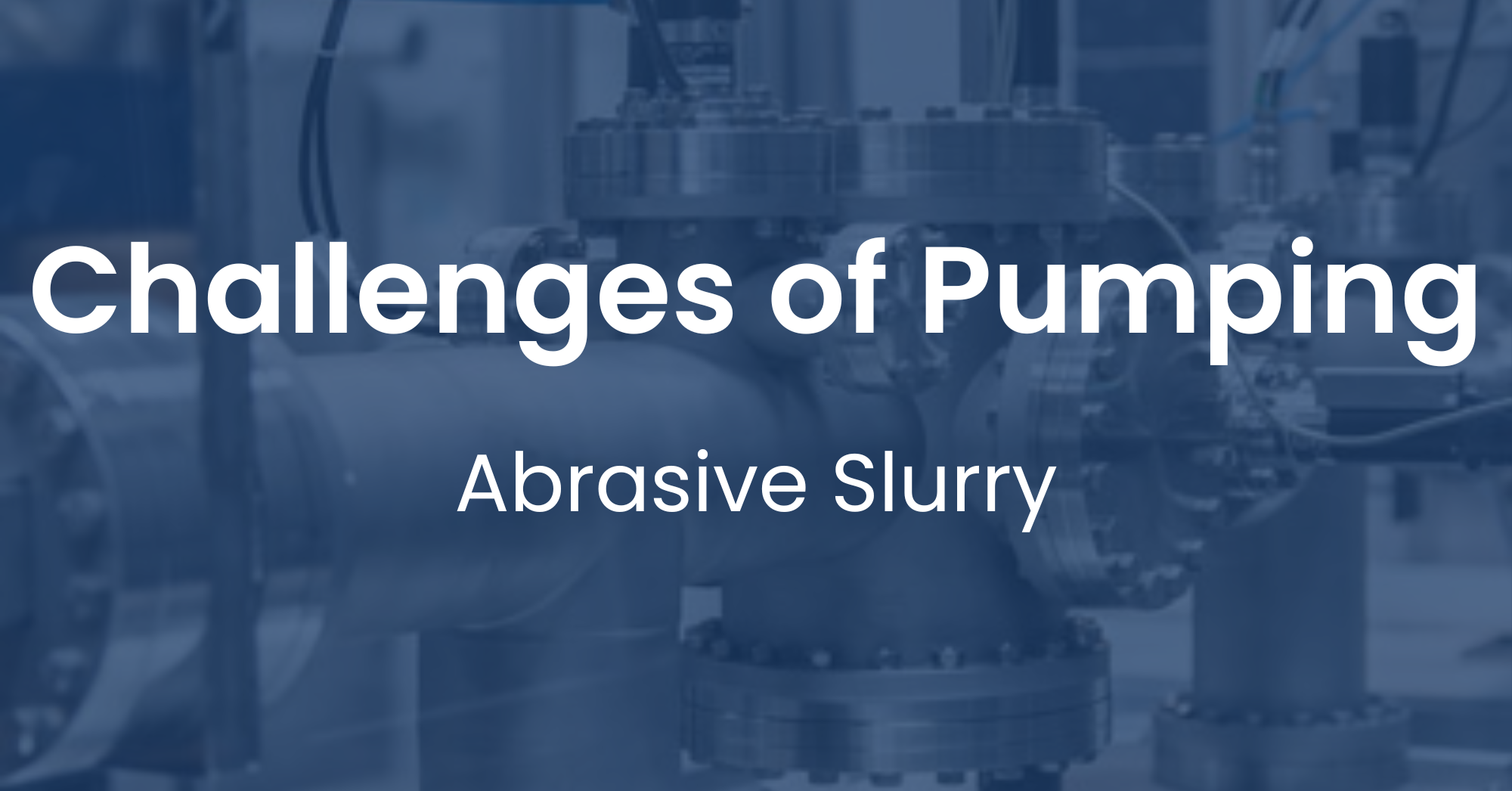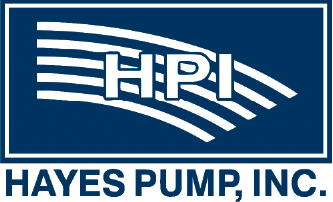The Challenges of Pumping Abrasive Slurry

Slurries are a blend of liquids and solids. Often used for transporting large quantities of solids that have undergone particle reduction processes, these materials are added to water or other liquids to allow them to be pumped away via a slurry pump. It’s a much more cost-efficient means for moving bulk solids after processing, including for abrasive substances. Slurry pumps are commonly used in many of these applications.
There are two basic types of slurry that abrasive slurry pumps are designed to transport. Non-settling slurries contain very small particles that remain suspended in the liquid, making it more viscous. Settling slurries contain solids that tend to sink to the bottom of fluids, except when agitated. Regardless of the type, materials within a slurry are often abrasive. Slurry pumps that handle such abrasive material need certain characteristics to transport material most effectively.
What is an Abrasive Slurry?
An abrasive slurry usually entails a mixture of insoluble solid material within water, so settling slurries tend to be more abrasive. Slurry pumps are utilized in various applications, including cement manufacturing, digging boreholes for wells, drilling for gas and oil, generating electricity, maritime dredging, material processing industries, mining operations, and tunnel construction. This will often entail the use of a slurry pump connected to piping.
For example, the raw ingredients for cement used in construction are brought in solid form to a cement plant, where these ingredients are then ground down and mixed with water utilizing piping within the plant before the cement is transported to where it’s needed. In contrast, during dredging operations, solids are dredged up with water and transported away from the area, with the slurry taken away via a pipeline to a disposal site. Theoretically, any solid can be transported in this manner, but pumps must be significantly more robust for a more abrasive slurry.
There are four basic classifications for abrasiveness in slurries, which are:
- Class 1: Least abrasive (clean and uncontaminated liquids)
- Class 2: Somewhat abrasive (contaminated water or other fluid)
- Class 3: More Abrasive (slurries like those containing clay or gypsum)
- Class 4: Most Abrasive (heavy slurries like those containing emery dust or mixtures used in lapping)
With larger particles and more abrasive particles, slurry pumping operations require more specialized pumps that can perform under harsher conditions. Without the correct pump for an abrasive slurry, parts like wear rings, shaft seals, pump impellers, mechanical seal faces, and lip seals are likely to wear much more quickly.
Industries That Utilize Abrasive Slurry Pumps & Their Applications
Depending on the industry and application, slurry pumps that handle abrasive materials can be considerably diverse in their design.
Industries that utilize abrasive slurry pumps include:
- Agriculture: Used for transferring water and crop irrigation, slurry pumps are also used for the management of weeds, removing animal waste, and cleaning sediment from ponds.
- Chemical processing: For fluids that are both corrosive and abrasive, slurry pumps used by the chemical processing industry transport acids, bases, and other solutions, as well as gels and syrups.
- Construction: Slurry pumps are often used for transporting concrete, grout, and mortar, as well as for cleaning up construction sites.
- Flood control: As flood waters contain suspended solids, slurry pumps are often used as an emergency response to flooding in agricultural, commercial, industrial, and residential areas for bypassing sewage and removing stormwater.
- Gas and oil drilling and refining: Often needing to handle a thick and abrasive slurry, pumps in the petroleum industry are used for applications such as fire suppression in refineries, handling mud from drilling operations, and transporting water in oilfields.
- Mining: Needing to withstand media that are particularly corrosive or abrasive, slurry pumps for mining operations are used to transfer water with sediment for such applications as dewatering gravel and sand quarries, settling pond containment, or emergency pumping.
- Power generation: For applications like transporting coal ash, slurry pumps are employed to remove waste within power plants.
- Waste: Handling contaminants from agricultural waste from manure lagoons or those used by municipalities to pump sewage to plants makes these sorts of slurries potentially hazardous, for which slurry pumps are particularly suitable.
- Wetland management: Land conservation activities to protect habitats like wetlands use slurry pumps to dewater habitats to prepare for migrating birds, flood habitats for hunting and fishing activities, mitigate storm surges, and manage other environmental conditions.
Regardless of how corrosive or abrasive the material they transport, slurry pumps are designed to handle conditions common to the industries in which they’re used.
Types of Abrasive Slurry Pumps
Pumps are imperative to production in many processing industries that work with abrasive material. Slurry pumps – like any type of pump – help move fluids from an area with high pressure to one that’s low, by the laws of fluid dynamics. The pump types involved in transporting slurries differ according to the application. They’re used for various beneficiation processes in the mining industry to improve the value of mined materials, many of which are abrasive. Slurry pumps are also used for processing fertilizers or the disposal of ash in thermal power plants. Regardless of the application, the pumping of abrasive slurries will remain an important aspect of many industries for decades to come.
Horizontal Slurry Pump
Horizontal pumps are suitable for highly abrasive material. Slurry pumps of this type are suitable for moving highly concentrated slurries containing either large or fine particles that can corrode components and piping. Horizontal slurry pumps are used for coal mining, metal processing, and power generation applications. With a horizontally positioned pump shaft, these abrasive slurry pumps utilize robust and wear-resistant material.
Vertical Slurry Pump
When the pump shaft is instead positioned vertically, it’s known as a vertical slurry pump. These types of pumps usually deal with slurries that contain high concentrations of material, containing coarse particles that corrode rather than just those that are strictly abrasive. Slurry pumps with vertical shaft placements are generally classified as submerged or submersible. Submerged slurry pumps generally only have their pump head placed under the surface of the slurry, while submersible slurry pumps have the motor and other components submerged. Generally, submerged vertical slurry pumps are used for applications like cement manufacturing, dye-making, municipal wastewater treatment, and paper mills. Submersible vertical slurry pumps are often used for purposes like dredging rivers, extracting sand, metal processing, and power generation.
Centrifugal Slurry Pump
The centrifugal slurry pump is the most common pump type for slurries, though there are numerous iterations. This type of slurry pump utilizes centrifugal force caused by a rotating impeller, which transfers energy to the slurry, much like centrifugal pumps for transporting water and other similarly flowing liquids. When pumping an abrasive slurry, pumps of this type should be chosen based on ease of maintenance, impeller design and size, materials being transported within the slurry, and shaft seal type. Not only do centrifugal slurry pumps need to handle wear from an abrasive slurry, but pumps also often need to consider corrosion and erosion. Their impellers must be heavier and wider so larger particles can get through. Meanwhile, the materials from which they’re made also need to withstand abrasion, corrosion, and erosion from the solids within the slurry.
Selecting the Right Abrasive Slurry Pump for an Application
Design is particularly important when handling materials that are corrosive and abrasive. Slurry pump impellers are particularly vulnerable to corrosive and abrasive slurries. If a pump isn’t designed correctly, it’s more likely to get clogged by slurry or sludge, so centrifugal pumps with tight tolerances around their impellers wear quickly when pumping a corrosive or abrasive slurry. Pumps can also lose suction when used for such applications, which can lead to longer periods of unplanned downtime, along with the expenses for maintenance and replacement components.
It's important to consider the slurry being pumped to steer clear of such avoidable repairs. Choosing the right pump for the application also leads to safer working conditions for those who work with them. Perhaps the most important reason for any business that requires an abrasive slurry pump is that it lasts much longer, which translates to reduced costs for repair and replacement.
For handling abrasive material, slurry pumps are often classified according to application:
- Cyclone feed: Similar to those used in both tailings transfers and for hydro-transport, cyclone pumps are used in hard rock mining to scalp and separate solids throughout processing by particle size, as well as for dredging operations.
- Flotation froth: The air in froth can cause problems with pump performance, so a special type of slurry pump that can remove air from the froth should be used in these cases.
- Hydro-transport: These types of slurry pumps are used to move material via water and are often used for dredging.
- Tailings transfer: As tailings tend to contain finer particles that are abrasive, slurry pumps like these are used in hard rock mining, transferring ore or mud along with chemicals used in the mining process.
When selecting a slurry pump, considerations should include efficiency, flow rate, output, and pressure. Additionally, the rate at which the pump is fed is critically important, with an optimal feed rate augmenting energy efficiency and extending the pump’s lifespan. The material properties and size of solid particles should also be considered, and the flow path’s durability as determined by the concentration of solids within the slurry.
How a slurry flows depends on its characteristics. Though none flow identically, wear patterns will differ depending upon the flow system used. Wear from an abrasive slurry pumped through a specific type of system needs to consider numerous factors, including special regulatory requirements necessary when handling specific materials. All these aspects must be considered when selecting the best pump for transporting an abrasive slurry.
Contact the Pump Experts
Hayes Pump, Inc. distributes an array of pumps and pump accessories for commercial, industrial, and municipal purposes throughout the Northeast. As the largest pump distributor in the region, Hayes carries slurry pumps that include those made by ITT Goulds Pumps. To learn more about which slurry pump is best for your application, contact Hayes Pump for all your pump-related needs.




